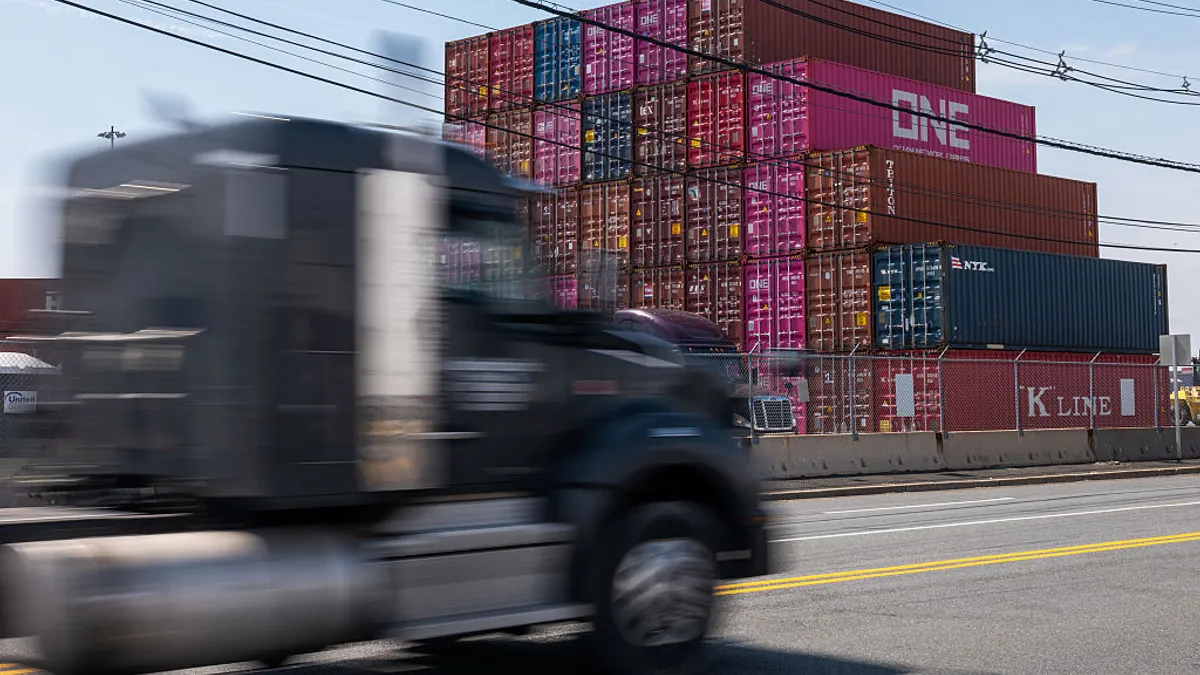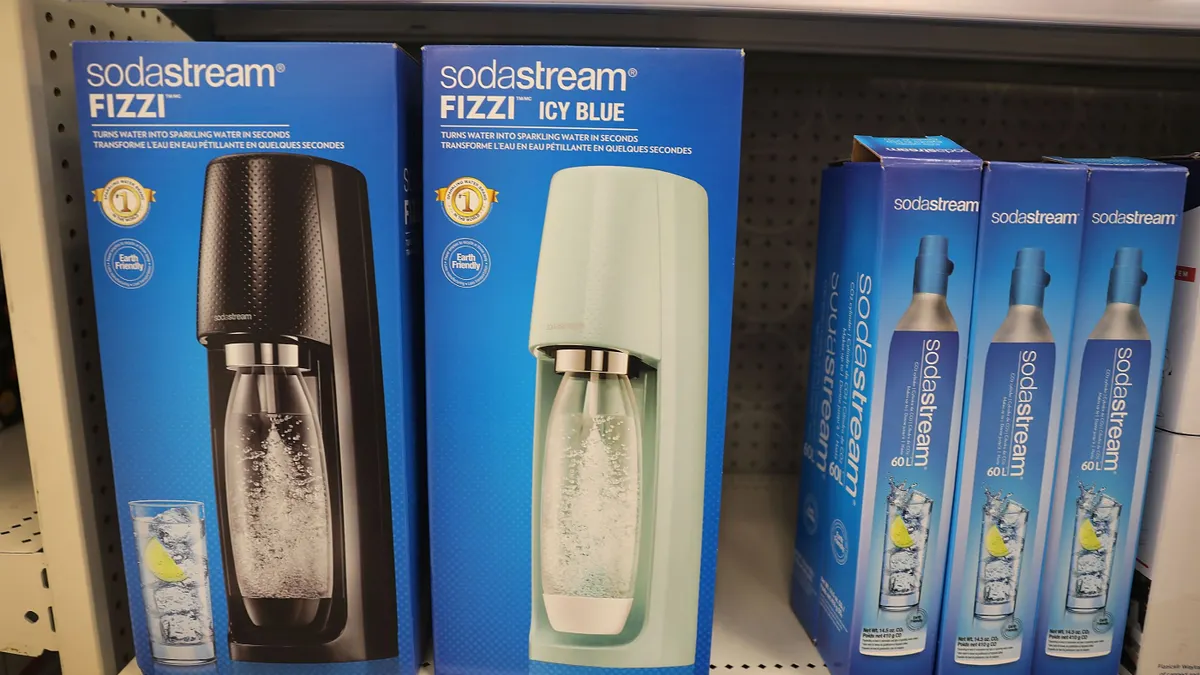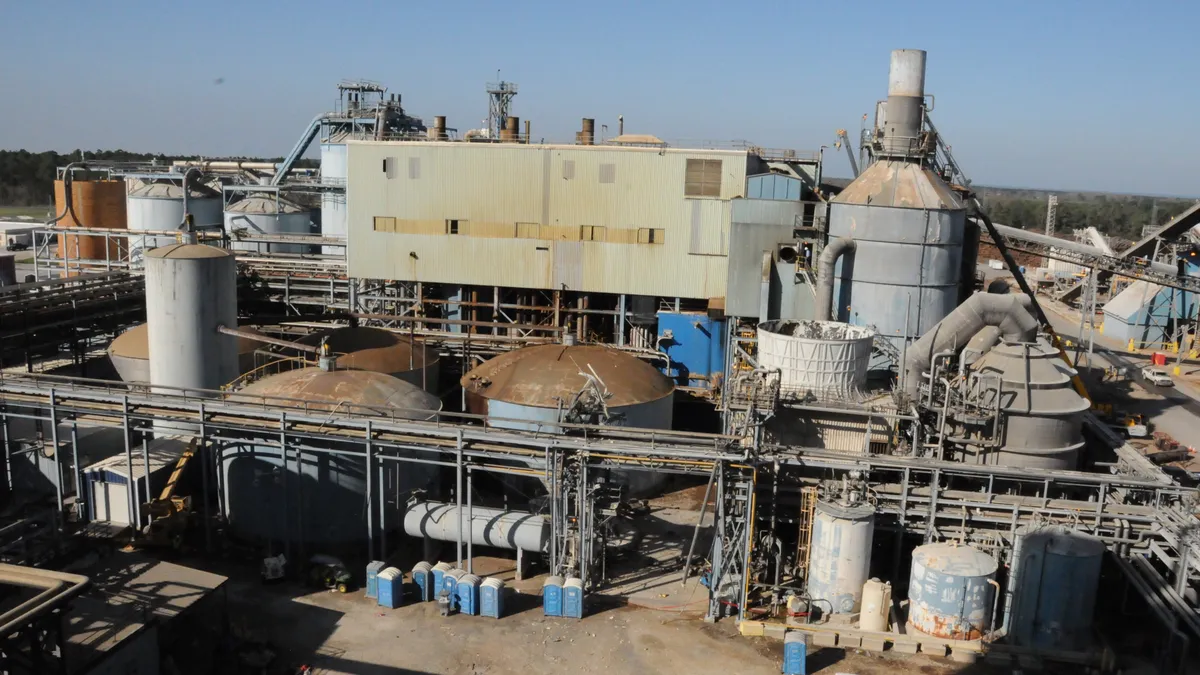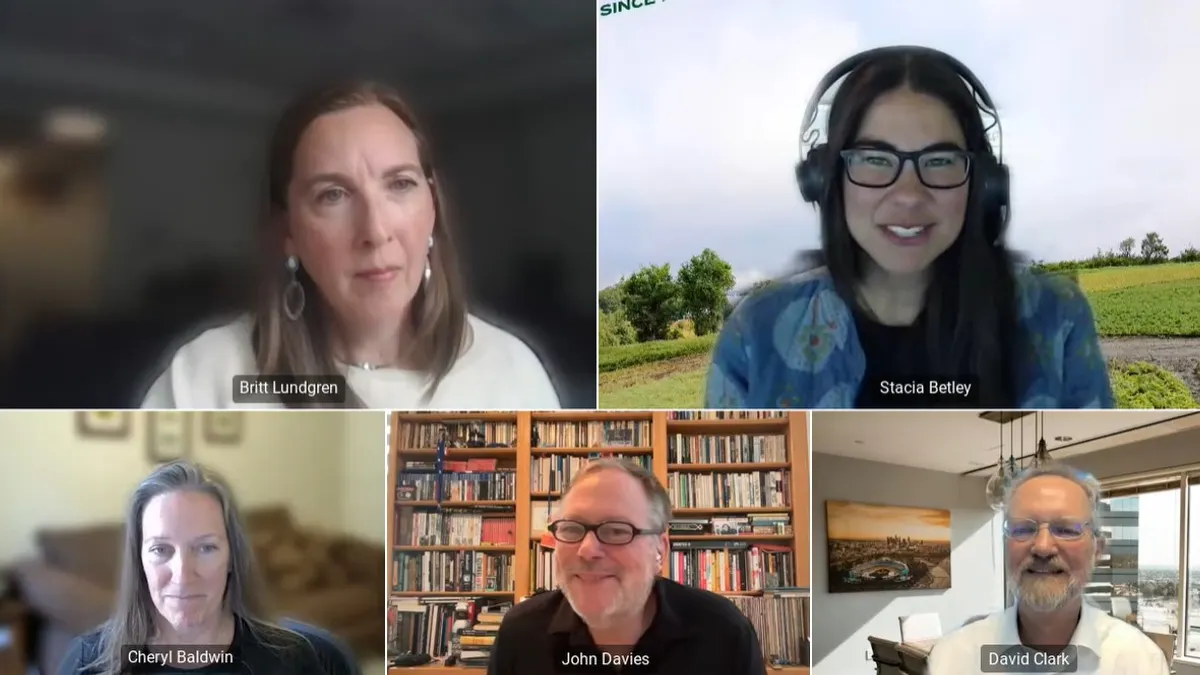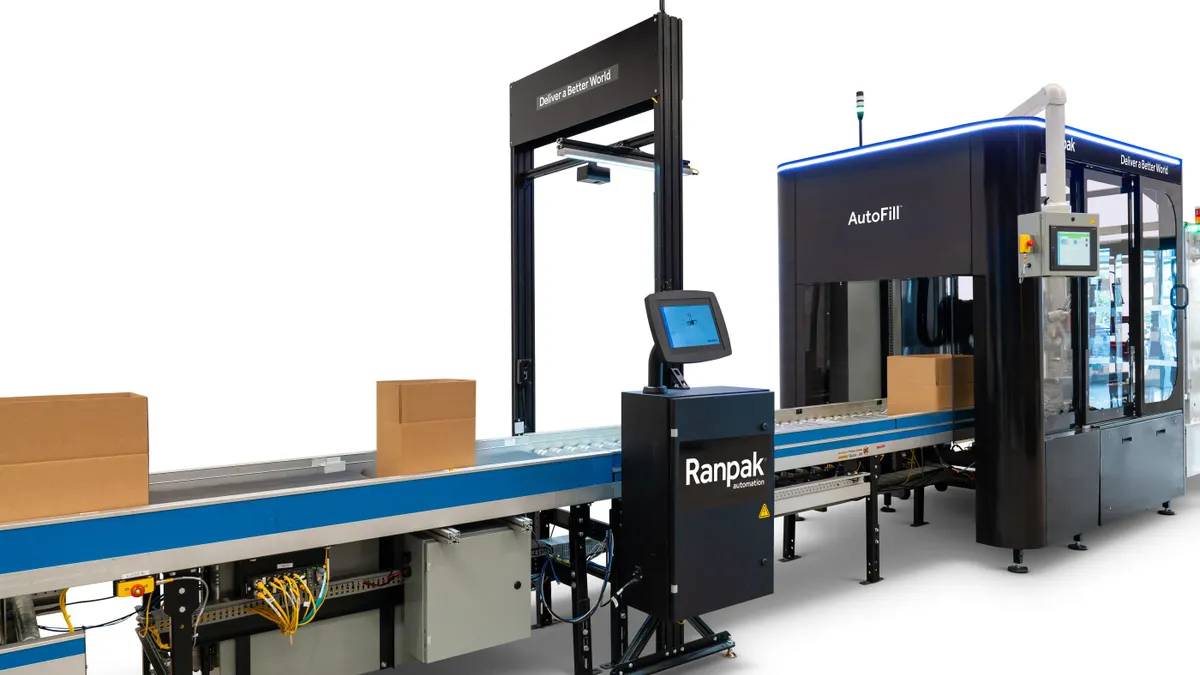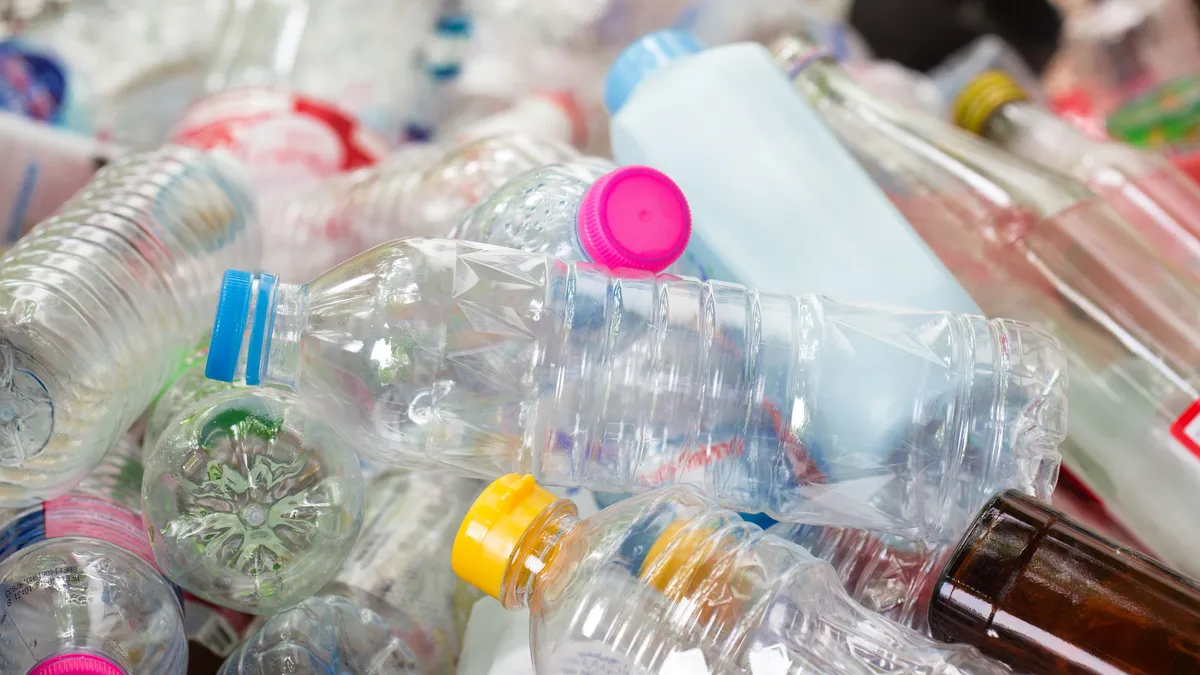Extended producer responsibility laws in the U.S. are setting a new bar for packaging. But don’t expect voluntary corporate goals to be rendered obsolete, some industry experts say.
Numerous companies, including those aligned with the Ellen MacArthur Foundation’s global commitment, previously pursued sustainability targets for their packaging portfolios that were pegged to 2025. These were largely related to reducing virgin plastic use or enabling packaging to be recycled, composted or reused. Ultimately, despite progress in some areas, many businesses reported notable gaps between ambition and reality.
In the time since initial goals were set, seven U.S. states have passed packaging EPR laws, each with their own “rates and dates” to give direction on transforming packaging and waste streams. For example, California’s SB 54 calls for cutting single-use plastic in packaging and food service ware by 25% by 2032, and ensuring it all is recyclable or compostable, with incremental goals along the way.
EPR is not a silver bullet for transforming plastic packaging, but it has evolved the landscape, said Jonathan Quinn, president and CEO of the U.S. Plastics Pact.
USPP, a group for businesses and other partners to collaborate on enabling a circular economy for plastic packaging, originally worked toward a collective set of 2025 targets, which were “always meant to be aspirational,” Quinn said. In 2024, the group announced updated targets tied to 2030.
“At the end of the day, EPR sets the floor, but voluntary commitments are what are going to set the pace,” said Quinn. It’s about “ensuring progress doesn't stall at the minimum requirement.”
So far this year, it’s been a mixed bag with how companies have addressed the 2025 turning point with goals. Research and consulting firm Gartner projected earlier this year that approximately 75% of organizations that voluntarily established sustainable packaging targets would sunset those goals by 2028.
In the leadup to 2025, some companies previewed that they were likely to miss certain targets, but haven’t necessarily revealed current or future plans to revise aims. Others, such as Coca-Cola, PepsiCo and Diageo, have discussed a next set of goals.
Diageo “didn’t have all the answers” in 2020 when setting overarching sustainability goals, the company wrote in a recent update. “Five years on, we have better data, deeper insights and a clearer view of the practical realities to deliver net zero.” In one packaging-related change, Diageo retired a goal to reduce packaging weight by 10%, because “the absolute nature of the packaging weight competes with volume growth,” the company explained.
Today, companies’ goals may become more customized, thoughtful and unique, said Cheryl Baldwin, vice president of sustainability consulting at Pure Strategies. Businesses have greater information than when they first set goals, partly driven by EPR data reporting requirements, she noted.
Targets in EPR laws are like “a good set of guiding stars” — a starting point as companies put together a puzzle, Baldwin said, considering laws’ different metrics and timeframes. “EPR allows companies some room to interpret how they're going to apply the overall themes.”
For packaging engineer Liz Morris, EPR is driving the most meaningful conversations around packaging design changes in her decades-long career. It’s also bringing more of a company’s teams into packaging conversations.
“Packaging can often feel like a third wheel. It's not the product, but it's the first touch point,” said Morris, a director at Anthesis Group specializing in circularity and value chain transformation.
EPR has financial underpinnings, but companies still have an opportunity to communicate positively about changes, she said. “Companies who are smart will use this to their advantage to brag about the work they're doing.”
A company’s own goal-setting and EPR strategies go hand in hand, Morris suggested, but how it chooses to externally communicate about goals or changes is “highly dependent on the company's leadership.”
“I don't see this as an ‘either/or’ situation,” she said. “Companies who are able to use EPR to their advantage will be ahead of those who are just struggling to stay compliant.”
In a recent blog from sustainability strategy and communications consultancy thinkParallax, Director of Communications Strategy Sami Grover detailed the importance of communicating with transparency and context.
“Transparency doesn’t just mean announcing a goal revision; it means explaining why. Companies can even use these moments to build trust and expand the conversation,” Grover wrote.
And beyond the potentially positive PR aspects, companies may just weigh whether they benefit from external accountability to be successful, Pure Strategies’ Baldwin said.
With companies advancing on their EPR journeys and considering opportunities with ecomodulation aspects of EPR laws, reevaluating design targets is an ongoing process. “Fee optimization is definitely a strategy, but it's not a straightforward strategy,” Baldwin said. For instance, changing from one material to another in one state might be beneficial, and then provide no savings or even result in an increase in another state.
USPP’s Quinn is optimistic that companies could see faster progress toward their goals between 2025 and 2030 than the 2020 to 2025 period, pointing to impacts from recycling investments that are poised to compound.
“The overall capacity for the collective industry has transformed tremendously,” Quinn said. “Evolution is going to start rolling downhill much faster.”







